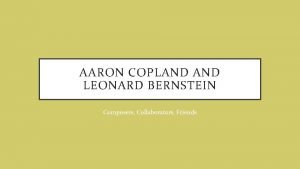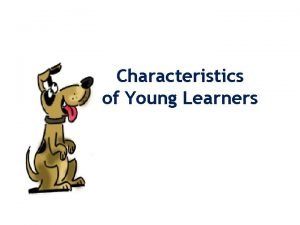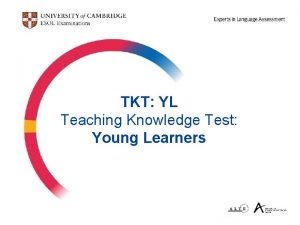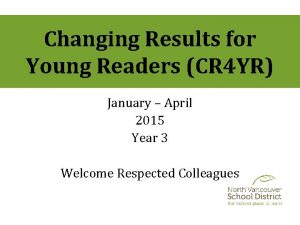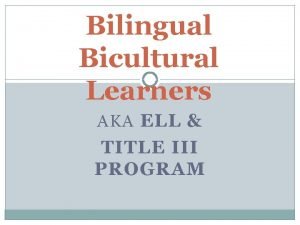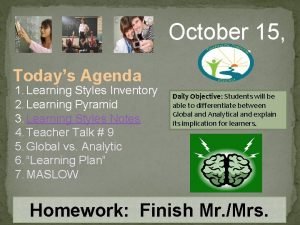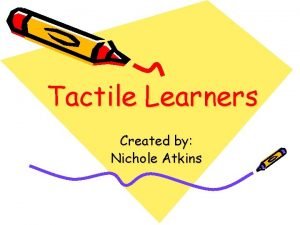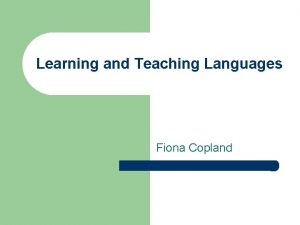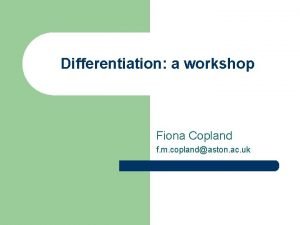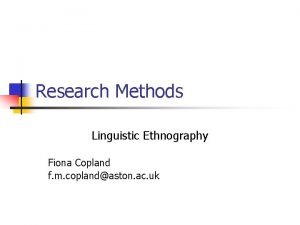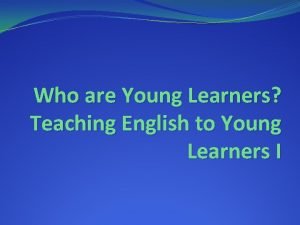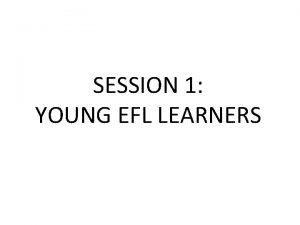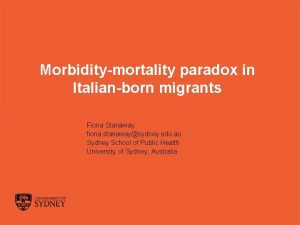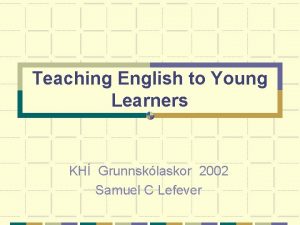Teaching English to Young Learners Fiona Copland School













- Slides: 13

Teaching English to Young Learners Fiona Copland School of Languages and Social Sciences

Audience

Aims Provide an overview of the units in this module Describe a number of contexts in which children learn English (Unit 1) Challenge the belief that ‘younger is better’ (Unit 1) Point forward to research agendas in the teaching of English to young learners.

Module Units 1. 2. 3. 4. 5. 6. 7. 8. 9. 10. Contexts and issues in teaching young learners Children as language learners Second language learning in the classroom Approaches to early L 2 teaching Resources and activities for young learners Literacy, reading and writing Language in the young learner classroom Interaction in the young learner classroom Course and syllabus design Assessment and evaluation.

What is a young learner?

Contexts 1 Teaching English to newly arrived immigrant children in primary school classroom in the USA, Australia or UK. b

Contexts 2 TEFL contexts.

Contexts 3 English as a second language

Contexts 4 Very young children learn English

Is younger better? Critical period hypothesis = CPH (Lenneberg, 1967).

Is younger better? What factors influence learning? Age Hours of input Cognitive development Educational environment Status of English ‘the variety of contexts and variables make it hard to claim that age is one of the independent variables’ (Nikolov, 2000: 22)

Interactionism ‘Language develops as a result of the complex interplay between the uniquely human characteristics of the child and the environment in which the child develops. ’ Lightbown and Spada, 1999: 22

Research in TYL Cameron, L. 2001. Teaching Languages to Young Learners. C. U. P. Moon J, 2005. Children Learning English Macmillan Heinemann, Third edition Williams M. R. L. and Burden R. L. 1997. Psychology for Language Teachers CUP. Moon, J. and Nikolov, M. editors. 2000. Research into Teaching English to Young Learners. University Press Pécs. Rixon, S. editor. 1999. Young Learners of English: Some Research Perspectives. Longman in association with The British Council.
 Teaching young learners english
Teaching young learners english How to teach grammar to young learners
How to teach grammar to young learners Aaron copland friends
Aaron copland friends Characteristics of attention
Characteristics of attention Tkt: yl resources
Tkt: yl resources Changing results for young learners
Changing results for young learners Principle of remedial teaching
Principle of remedial teaching Language tools
Language tools English language learners
English language learners Reading strategies for english language learners
Reading strategies for english language learners Equal protection for english language learners
Equal protection for english language learners What is microteaching
What is microteaching Global vs analytical learners
Global vs analytical learners Heather nichole atkins
Heather nichole atkins


